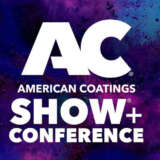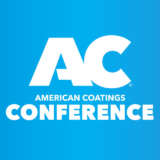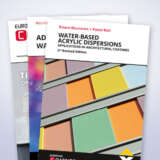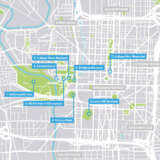
Brett Rodgers
Vice President, Communications
PaintCare
As an industry-led product responsibility organization (PRO), PaintCare is a key player in the circular economy for paint. The non-profit organization created by the American Coatings Association (ACA) enables consumers to easily drop off leftover paint at conveniently located sites and educates the public about reducing paint waste. Its programs operate in the states that have passed paint stewardship laws — California, Colorado, Connecticut, Maine, Minnesota, New York, Oregon, Rhode Island, Vermont, and Washington, as well as the District of Columbia, and is planning a program for Illinois. Collectively, the organization has managed over 65 million gallons of leftover paint, diverting most of it away from landfill in favor of beneficial reuse and recycling. The program is funded by a nominal “PaintCare fee” placed by manufacturers on every container of architectural paint sold in an active state.
Convenient access to the program is one of the keys to PaintCare’s success. Across the 11 active PaintCare programs, staff have set up about 2,500 year-round paint drop-off sites for use by households, businesses such as painting contractors, and others with leftover paint. Most (about 75%) of the sites are paint retail stores that are based in centrally located areas, making it easy for consumers to find them and drop off their paint. PaintCare also works with municipal household hazardous waste (HHW) facilities, solid waste transfer stations, recycling centers, public works yards, and material reuse stores (e.g., Habitat for Humanity Restores) where leftover paint in good condition is resold.
In addition to year-round sites, PaintCare has also managed paint from over 7,000 municipal HHW and paint collection events, conducted more than 8,700 large volume pickups from painting contractors and others with 100 gallons of accumulated paint or more, and held over 300 PaintCare-operated drop-off events in underserved communities. The program is currently collecting approximately 700,000 gallons of leftover paint per month. About three quarters of the collected material consists of latex (water-based) paint and one quarter consists of oil-and solvent-based paint.
Leftover paint collected by the PaintCare program is managed according to a policy of highest, best use.
This means that paint is reused or recycled by processors back into paint whenever possible. If it can’t be reused or recycled, processors find the next best use for it. Most latex paint is used to manufacturer recycled-content paint products, while some is used for concrete mixtures, landscaping materials, or as a component of daily cover for landfill management. A small percentage of dry latex paint is securely disposed of if no other use can be found. Oil- and solvent-based products are mostly used by processors as a fuel. In some states, a small percentage of oil-based paint is recycled into new paint products.
PaintCare’s public outreach efforts ensure that households and businesses in active states learn about the program and the recycling opportunities it offers. Following the waste management hierarchy of reduce, reuse, recycle, PaintCare’s educational messaging encourages consumers to “buy right, use it up, and recycle the rest.” PaintCare provides a variety of brochures, signage, cards, and other point-of-sale materials to paint retailers and others in each active program state so those purchasing and using paint will have an easy reference when the job is done.
All these beneficial activities are funded through a nominal, mandatory “PaintCare fee” placed by manufacturers on every container of architectural paint sold in active program states. The fee is based on container size and is applied to containers larger than a half pint and up to 5 gallons in size, using three fee tiers. It is set at a level to cover the costs specific to each program and varies by state, though an effort is made to use similar fee structures when possible. Current fees range from 30 cents on pints and quarts to $2.45 on 2–5-gallon containers.
By providing a comprehensive solution for the management of leftover paint, PaintCare has taken significant strides towards a circular paint economy, one gallon at a time. With continued support and expanding initiatives, the program’s role in promoting responsible paint recycling will continue to grow, inspiring other industries to follow suit in adopting stewardship practices.























